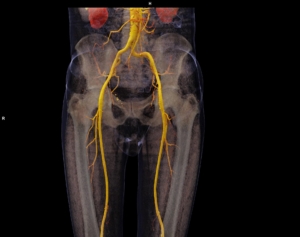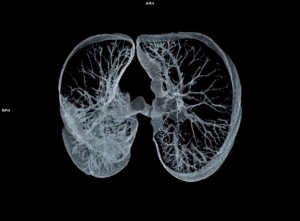Siemens Healthineers launches Somatom X.ceed CT with bundled AI companions for fast, precise interventions
Siemens Healthineers has unveiled its fastest single-source CT scanner – Somatom X.ceed – a high-resolution, high-speed, low-dose CT scanner, which the company says is engineered specifically for the most challenging clinical areas where time and precision are of essence.
Two ‘companions’ are bundled with the CT scanner for automated user guidance: myExam Companion guides users through diagnostic procedures; myNeedle Companion supports targeted needle path planning as well as laser-guided insertion across multiple modalities.
As a result, the Somatom X.ceed works especially well in areas like emergency imaging, cardiac CT, and CT-guided interventions.
With its large bore of 82 centimetres and its user-friendly tablet operation, Somatom X.ceed is designed from the ground up to enhance user and patient experience.
myNeedle Companion for minimally invasive treatment
Computed tomography is one of the most used imaging modalities when cross-sectional image guidance is needed for percutaneous interventional procedures, like biopsies, ablations, or pain therapy. Almost 50% of sites perform at least three CT-guided interventions per day. In these procedures, time and precision are critical.
The myNeedle Companion simplifies the workflow in minimally invasive treatments. myNeedle Companion is a unique combination of hardware and software designed to greatly reduce the complexity in CT guided interventions. In addition, it is the first universal solution with a harmonized user interface for the planning and guidance of percutaneous needle procedures across imaging modalities, be it for a CT or an angiography system. Once the workflow is trained on one modality, the training efforts on another modality are expected to be much shorter. This can help to reduce unwarranted variations and minimize training efforts. Familiar user interfaces let the radiologist concentrate on what matters: accurate needle positioning with the help of the unique myNeedle Laser: a powerful, fully integrated option that projects the needle entry point and insertion angle directly on the body of the patient – even in advanced double-angulated procedures with multiple needle paths.
Emergency and cardiovascular procedures
Emergency radiology is rapidly evolving. In the last 20 years the demand for CT-imaging in emergency departments has increased by 250% [1]. In a busy emergency environment, inefficient workflow can slow down radiologists who need to triage patients and perform multiple, demanding tasks quickly. With the intelligent support of myExam Companion, radiologists can easily unlock the full potential of Somatom X.ceed, speeding up procedures from patient preparation to image evaluation. Applications powered by artificial intelligence provide ready to read results aimed to facilitate diagnostic tasks.
The ability of cardiac CT to rapidly evaluate multiple cardiovascular conditions has allowed CT to become an important diagnostic instrument for steadily rising numbers in cardiovascular diseases (CVD) [2]. From 2011 to 2019, CT cardiac procedures more than doubled from 1.4 to 3.0 million [3]. These procedures, some of the most complex in computed tomography, are now performed routinely by staff of all skills levels. Here, as in emergency imaging, myExam Companion plays a major role in guiding the user towards more standardized results and low dose levels.
“As the number and complexity of radiological procedures increase, demands on staff are reaching heightened levels. This continues to cause unwarranted variation, in both diagnostic and interventional procedures. Somatom X.ceed, together with myNeedle Companion, is a true game changer for CT-guided interventions. After the introduction of myExam Companion last year, reducing the overall complexity of scanner operation in as many aspects as possible was our next logical step,” explained Philipp Fischer, Head of Computed Tomography at Siemens Healthineers.
References
1. IMV (2020): CT Market Outlook Report.
2. https://www.acc.org/about-acc/press-releases/2020/12/09/18/30/
cvd-burden-and-deaths-rising-around-the-world
3. IMV (2019): CT Market Outlook Report.
CT angiography of the legs in case of peripheral vessel disease and arteriosclerosis. From static to dynamic CT angiography – the clinical need determines the scan parameter. Photo credit: Courtesy University Hospital Erlangen, Germany
Visualization of structural changes of the lung tissue. Simply high resolution throughout the whole lung at any circumstances. Photo credit: Courtesy Kantonspital Baden, Switzerland



